Introduction
Land acquisition for renewable energy projects, particularly wind farms, presents significant challenges that require careful navigation. Local zoning laws and ordinances often create bottlenecks for development. In 2023, a record 228 local policies were enacted to restrict wind and solar projects, reflecting a growing trend of community opposition.
This opposition has become more frequent and costly for developers to address, with about a third of wind and solar applications being canceled and nearly half delayed by six months or more.
A notable example occurred in 2013 in northeastern Alabama, where a Texas-based company's proposal for two windmill farms was swiftly defeated by local opposition, despite the potential to power over 24,000 homes. This case underscores the importance of understanding and managing community concerns effectively.
Moreover, the variability of land tenure systems can complicate negotiations, especially in areas with mixed public and private land ownership. The permitting process often lacks adequate opportunities for opponents to voice their concerns and work with proponents to resolve differences. This can lead to substantial delays and increased costs, which are further exacerbated by the need to comply with laws like the National Environmental Policy Act (NEPA) and its state equivalents, which can add years to project timelines and significant compliance costs.
Understanding and addressing these challenges is crucial for the successful planning and execution of wind energy projects. Engaging with community members, developers, and municipal staff to build consensus and address opposition is essential for the sustainable development of renewable energy infrastructure.
Challenges in Land Acquisition for Renewable Energy Projects
'Land procurement for sustainable energy initiatives, especially turbine farms, poses considerable difficulties that demand thoughtful handling.'. Local zoning laws and ordinances often create bottlenecks for development. In 2023, a record 228 local policies were enacted to limit solar initiatives, reflecting a growing trend of local resistance. This opposition has become more frequent and costly for developers to address, with about a third of wind and solar applications being canceled and nearly half delayed by six months or more.
A notable example occurred in 2013 in northeastern Alabama, where a Texas-based company's proposal for two windmill farms was swiftly defeated by local opposition, despite the potential to power over 24,000 homes. This case underscores the importance of understanding and managing community concerns effectively.
Moreover, the variability of land tenure systems can complicate negotiations, especially in areas with mixed public and private land ownership. The permitting process often lacks adequate opportunities for opponents to voice their concerns and work with proponents to resolve differences. This can result in considerable delays and higher expenses, which are further intensified by the need to adhere to regulations like the National Environmental Policy Act (NEPA) and its state counterparts, which can extend timelines and substantial compliance costs.
Comprehending and tackling these obstacles is essential for the effective planning and implementation of renewable power projects. Interacting with community members, developers, and municipal personnel to build agreement and tackle resistance is crucial for the sustainable advancement of renewable power infrastructure.
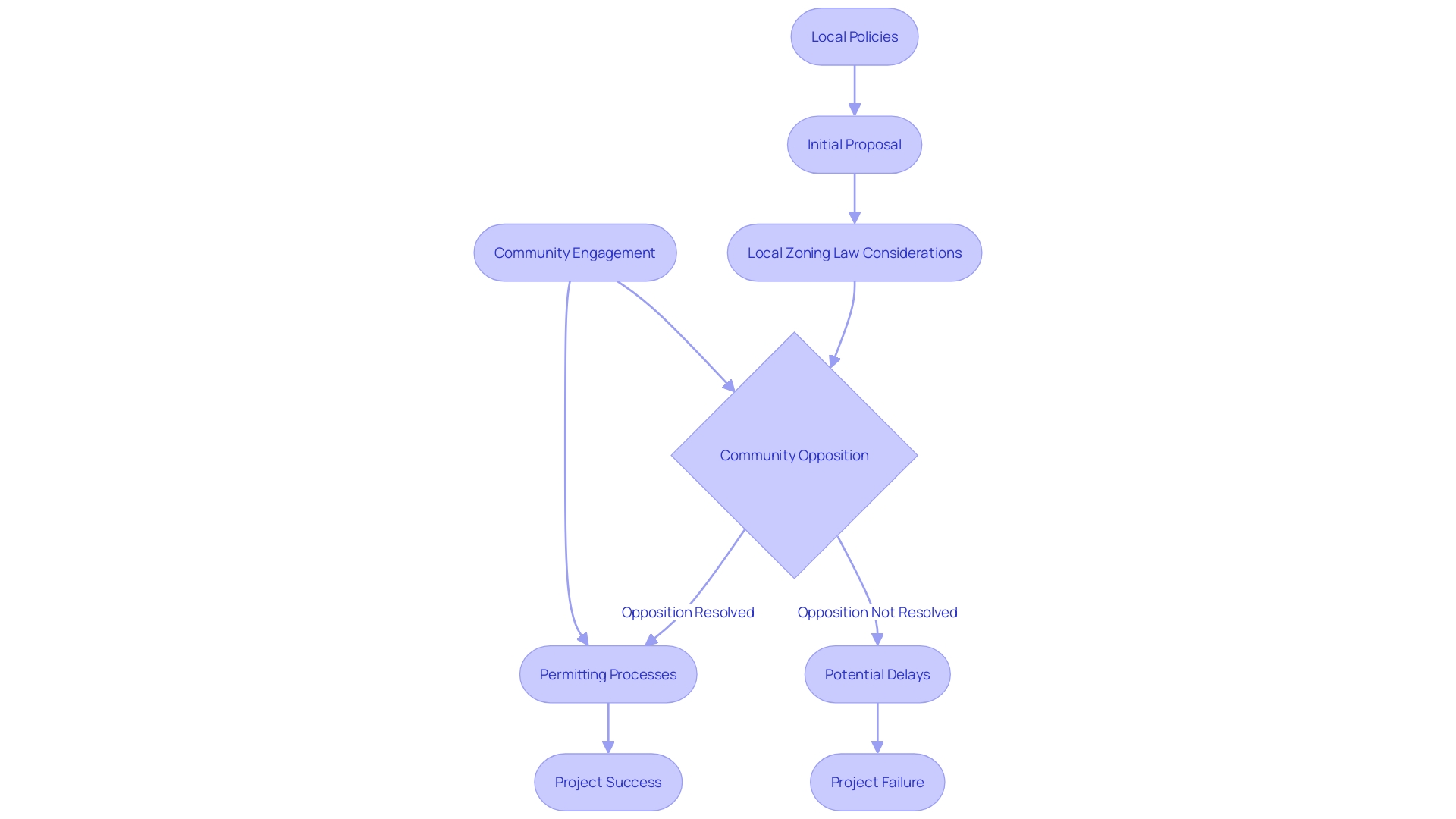
Key Factors in Evaluating Land for Wind Farms
Assessing land for turbine farm development requires a multifaceted approach, considering various essential factors. Among these, wind resource availability stands paramount, as it directly influences the power output potential. Proximity to transmission infrastructure is equally vital, facilitating efficient energy transfer to the grid and minimizing transmission losses.
Environmental impact assessments, mandated by regulations such as the National Environmental Policy Act (NEPA), are essential to identify and mitigate potential ecological disruptions. This includes a thorough analysis of wildlife habitats, water resources, and other natural features. NEPA's stringent requirements ensure that any significant environmental effects are rigorously evaluated and addressed.
The socio-economic implications for local populations are another critical consideration. Recent studies, such as the analysis of 428 energy farms in the United States, highlight the nuanced effects of farm development on local property values and community welfare. 'While initial concerns about property value declines post-announcement have been observed, these values tend to recover within a few years of the energy farm becoming operational.'.
Topographical characteristics and land utilization trends greatly affect the viability and effectiveness of renewable power initiatives. Regions with beneficial terrain can improve air movement and power collection, while current land use trends can either facilitate or obstruct progress. Comprehending these dynamics is essential for optimizing site selection and ensuring sustainable implementation.
Overall, a comprehensive evaluation incorporating these factors can lead to more informed decision-making, ultimately fostering successful and sustainable wind energy initiatives.
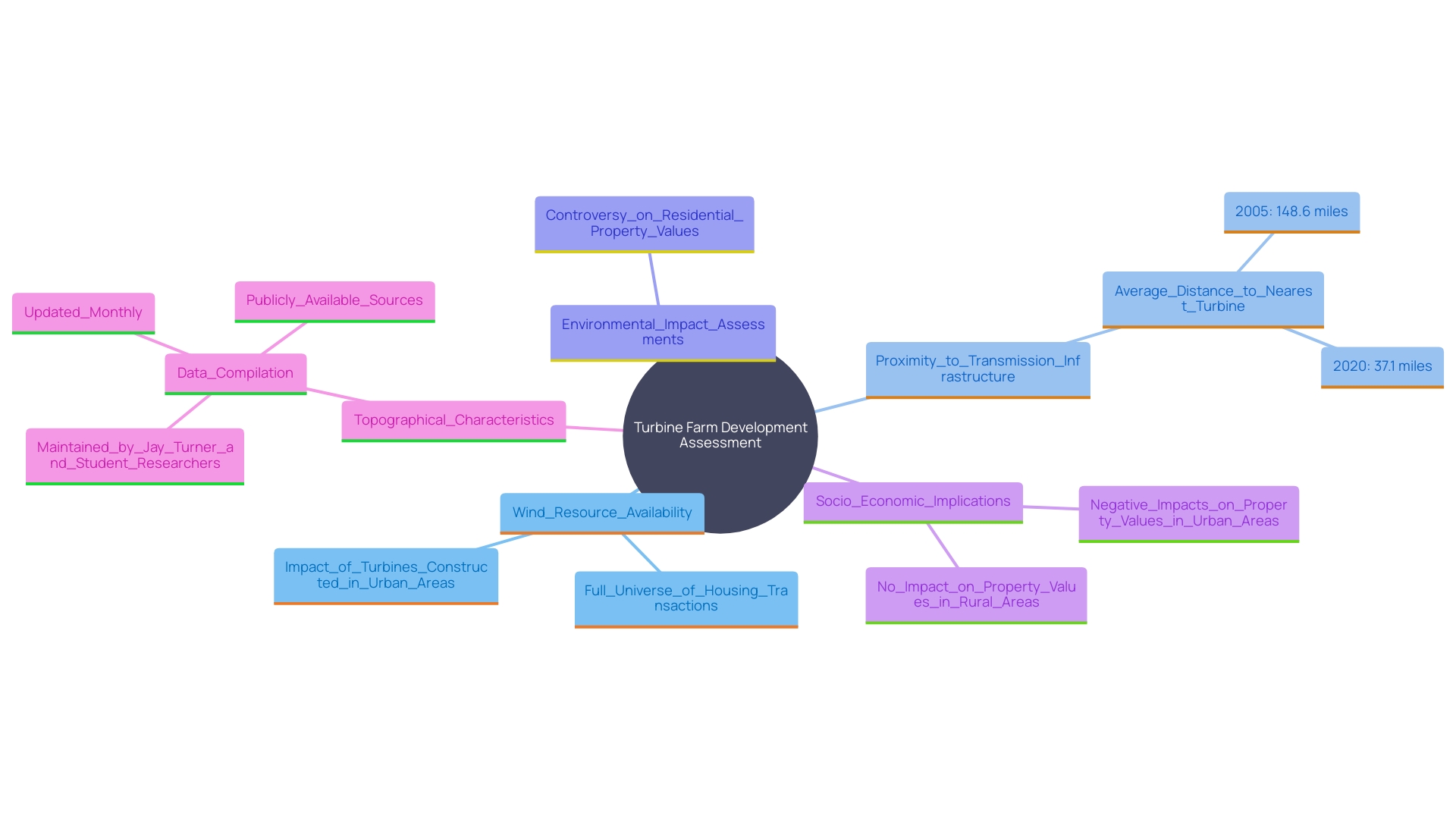
Building Trust with Local Communities and Landowners
Establishing and maintaining trust with local populations and landowners is essential for effective land acquisition. Engaging stakeholders early and maintaining transparent communication about project benefits can help foster goodwill. According to research by RMI, legal agreements in collaborative engagements are essential but insufficient on their own. Previous experiences demonstrate that representatives of the group must truly represent the interests of the members to prevent backlash.
Effective participation from the public goes beyond mere notifications or one-sided meetings. It requires genuine two-way communication and collaboration. 'The Energy Communities IWG’s recent initiatives, such as the Getting Started Guide and the Pennsylvania Rapid Response Team, emphasize the importance of structured support and resources for groups navigating economic and energy transitions.'.
Furthermore, public listening studies, widely utilized in Arctic Social Engagement, have shown the importance of inclusive and comprehensive engagement methods. These studies have successfully led to mutual understanding and cooperation, highlighting the importance of listening to and incorporating community input in the decision-making process. This collaborative approach not only enhances trust but also often results in solutions that benefit all parties involved.
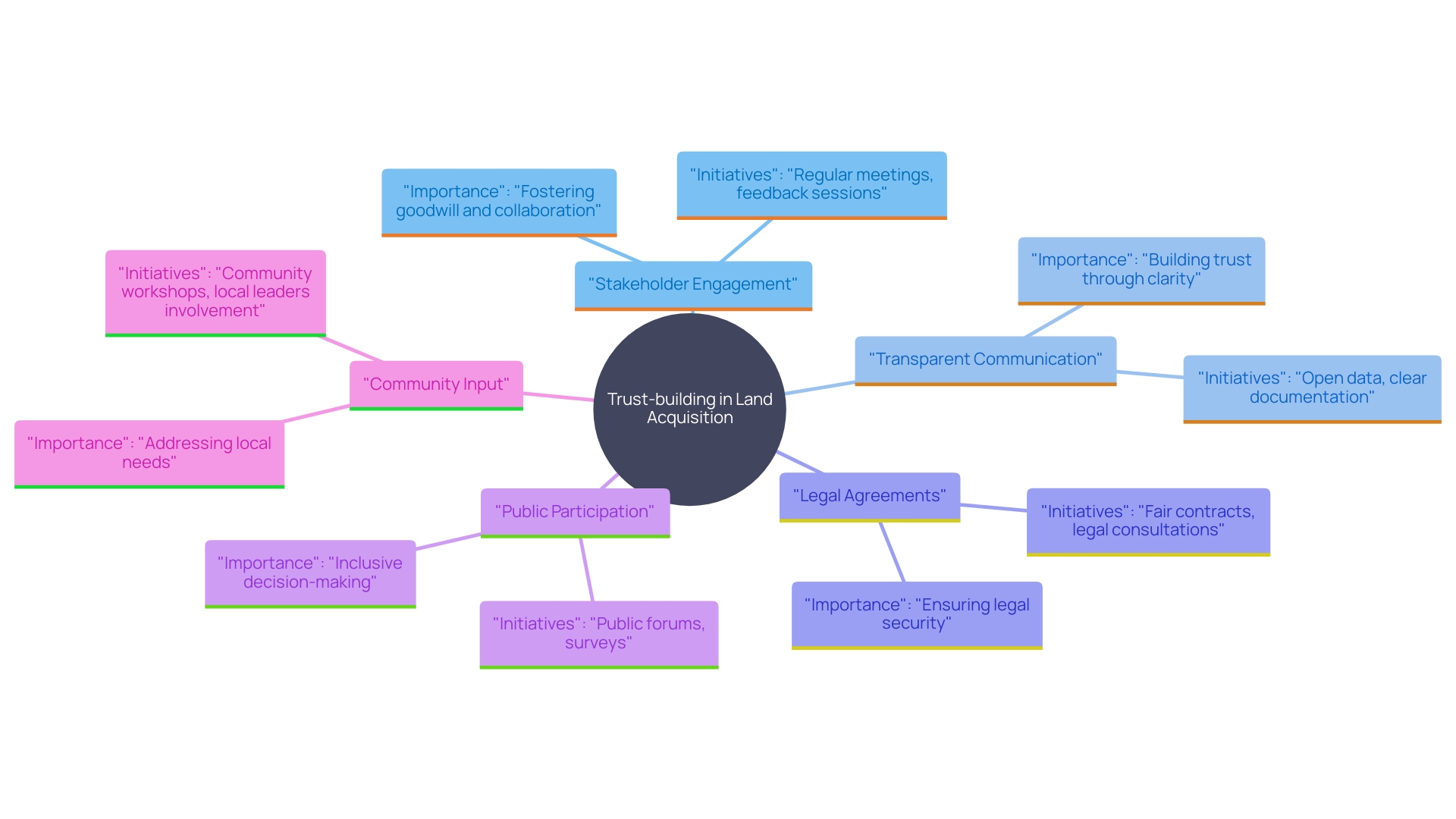
Navigating Legal and Regulatory Hurdles
Navigating the legal and regulatory landscape for land acquisition in wind farm initiatives is notably complex. It's essential to comprehend federal, state, and local regulations to ensure compliance and minimize delays. For instance, the National Environmental Policy Act (NEPA) mandates federal agencies to perform detailed environmental analyses for actions significantly impacting the environment. This encompasses initiatives financed or approved by federal organizations, necessitating comprehensive environmental assessments.
Securing permits, conducting environmental assessments, and adhering to land use regulations are critical steps in the acquisition process. The need for robust standards in protecting frontline communities and the environment often leads to a slow and contentious permitting process. This complexity highlights the significance of involving legal specialists knowledgeable about renewable regulations to facilitate development. 'Jeff Marootian, Principal Deputy Assistant Secretary for Energy Efficiency and Renewable Resources, emphasizes the significance of comprehending the varied regulatory framework throughout the United States, mentioning that efficient planning and approval procedures are vital for promoting clean power initiatives.'.
'Practical instances, like the recent achievement of Vineyard Wind providing power to New England's grid, demonstrate both the possibilities and difficulties of renewable initiatives.'. Despite these successes, local opposition remains a significant hurdle. 'The 2013 case of a Texas-based company's unsuccessful renewable energy project in northeastern Alabama due to local opposition exemplifies these challenges.'. To mitigate such issues, it's crucial for renewable sources developers to build consensus with community members and address legitimate concerns raised by stakeholders.
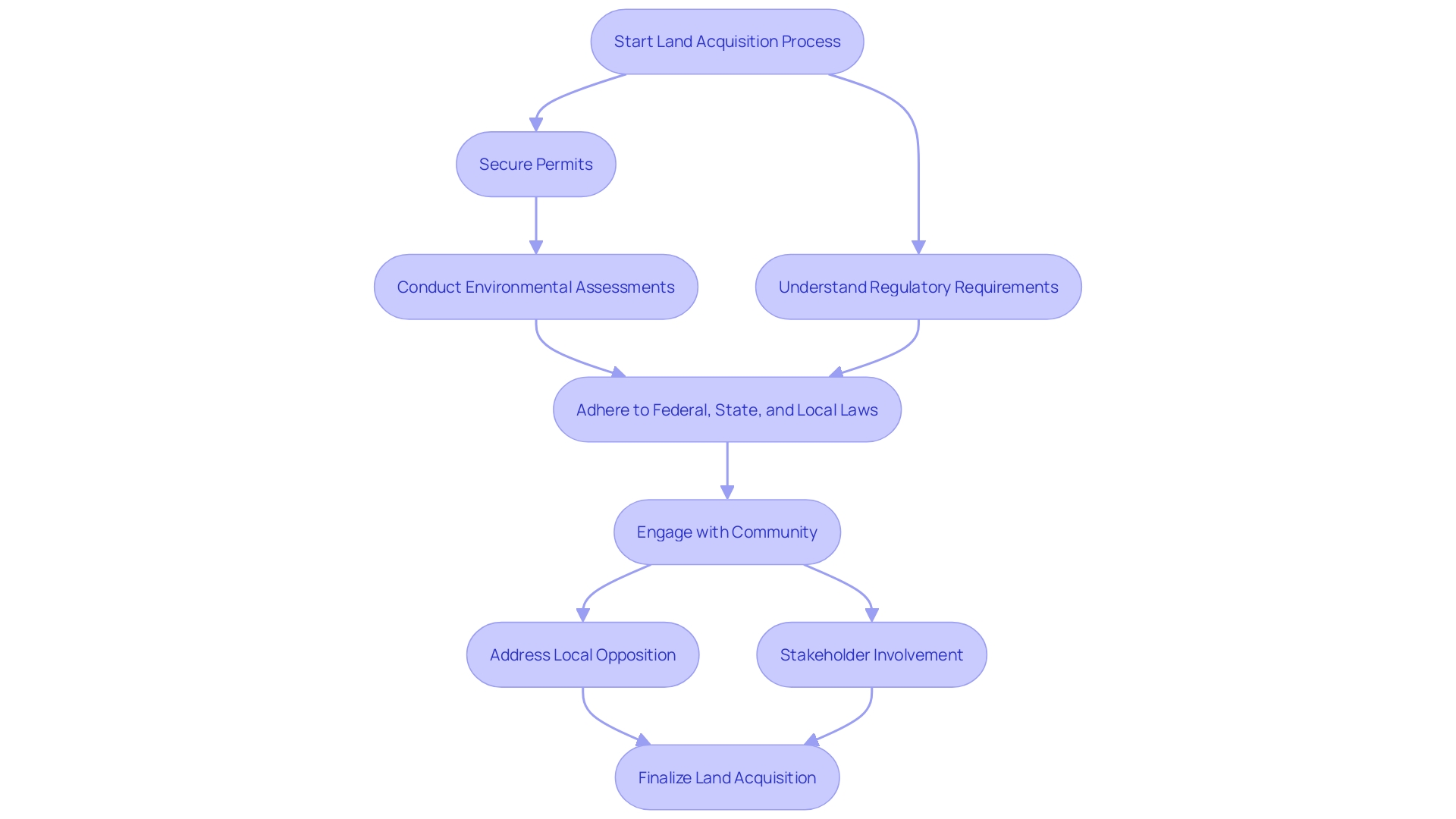
Technological Advancements in Land Acquisition
Advancements in technology, such as Geographic Information Systems (GIS) and AI-powered tools, have revolutionized the land acquisition process. GIS enables detailed spatial analysis, optimizing site selection for wind farms by considering various criteria, such as wind speed, proximity to transmission lines, and environmental impact. This technology's ability to produce high-definition maps, 3D models, and digital twins has provided decision-makers with comprehensive data, improving the accuracy of site assessments.
AI tools have further enhanced efficiency in title research and data processing. By automating complex tasks, AI reduces the time and resources required to navigate intricate land ownership records. This technological leap mirrors the significant gains in operational effectiveness facilitated by the internet in the past, as noted by industry leaders at the Qualia’s 2024 Future of Real Estate Summit. Ai's potential to transform the title industry is evident, with the capacity to streamline processes that were once cumbersome and time-consuming.
The combination of AI and GIS in land acquisition not only speeds up the process but also meets the increasing need for renewable initiatives. For instance, modern electric grids, initially designed for centralized power plants, now face the challenge of supporting various renewable initiatives. AI and GIS tools help mitigate these challenges by providing predictive capabilities and insights that inform crucial decisions. This technological advancement highlights the significance of creativity in addressing the challenges of land acquisition for power initiatives.
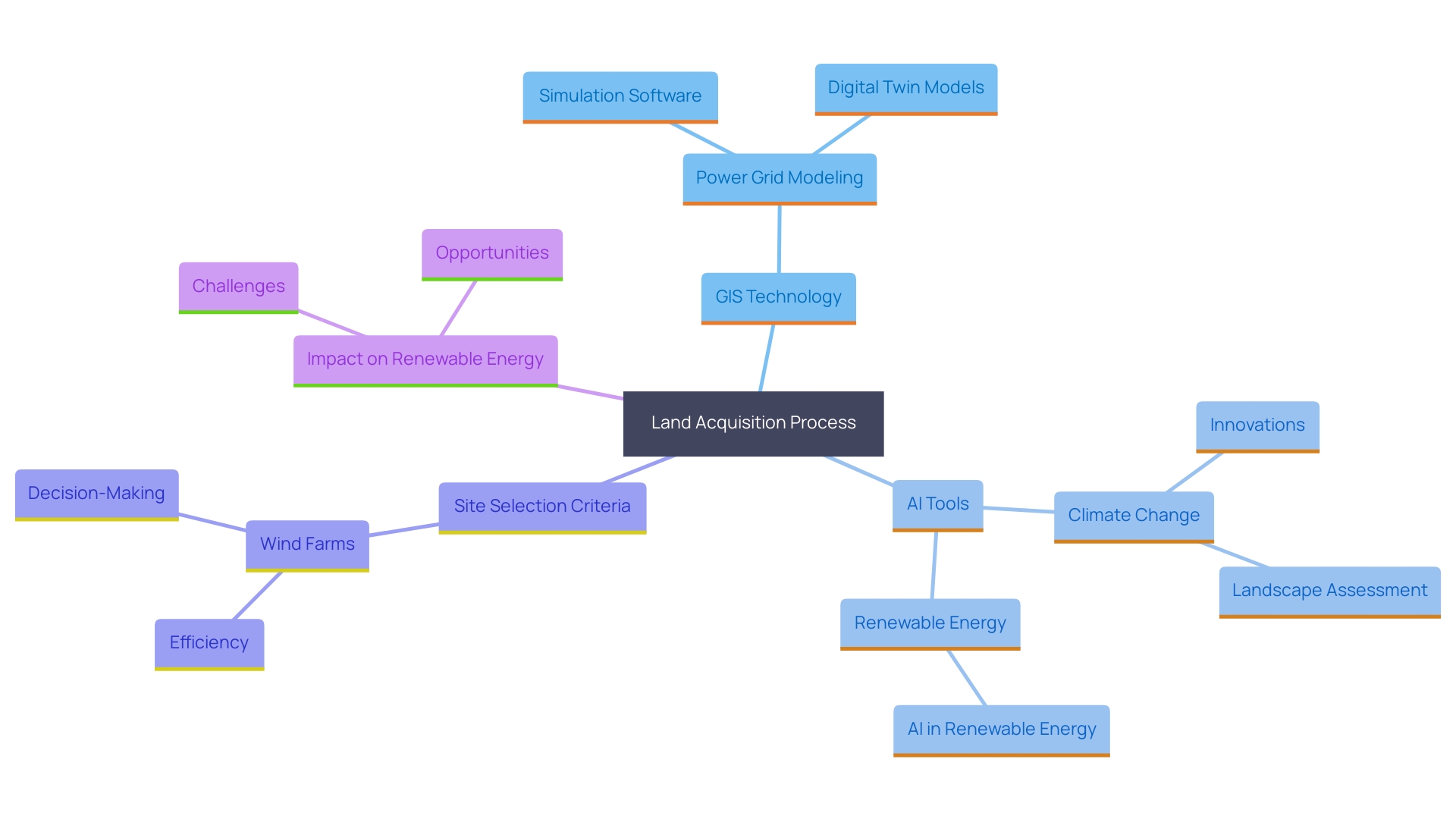
Best Practices for Streamlining the Land Acquisition Process
'To streamline the land acquisition process for energy initiatives, it is essential to adopt comprehensive best practices.'. Conducting thorough pre-acquisition assessments allows for a detailed understanding of the land's suitability and potential challenges. By leveraging digital technologies, companies can enhance data management and ensure efficient decision-making processes. Developing a clear acquisition strategy that outlines specific objectives and timelines is crucial in mitigating potential obstacles. This approach aligns with the current trend of integrating advanced technology into power plant operations, transforming significant work routines and asset management processes.
Ongoing stakeholder involvement throughout the lifecycle is essential. Guaranteeing that stakeholders stay informed and engaged aids in establishing trust and credibility, which are vital for success. For example, the rapid expansion of sustainable power in North America highlights the significance of keeping open channels of dialogue with different parties to manage the intricacies of financial considerations and regulatory landscapes.
Furthermore, the power industry’s transition into the digital age highlights the necessity of a sound digital strategy. This strategy should guide organizations in leveraging digital technologies effectively, with a clear vision and specific goals. The document regarding the changing power transition highlights the necessity for reliable collaborators who grasp financial aspects and can tackle stakeholder issues thoroughly.
By adopting these practices, energy companies can ensure they remain competitive in the rapidly evolving market, meeting their mission of providing reliable and sustainable electricity while keeping projects on time and budget.
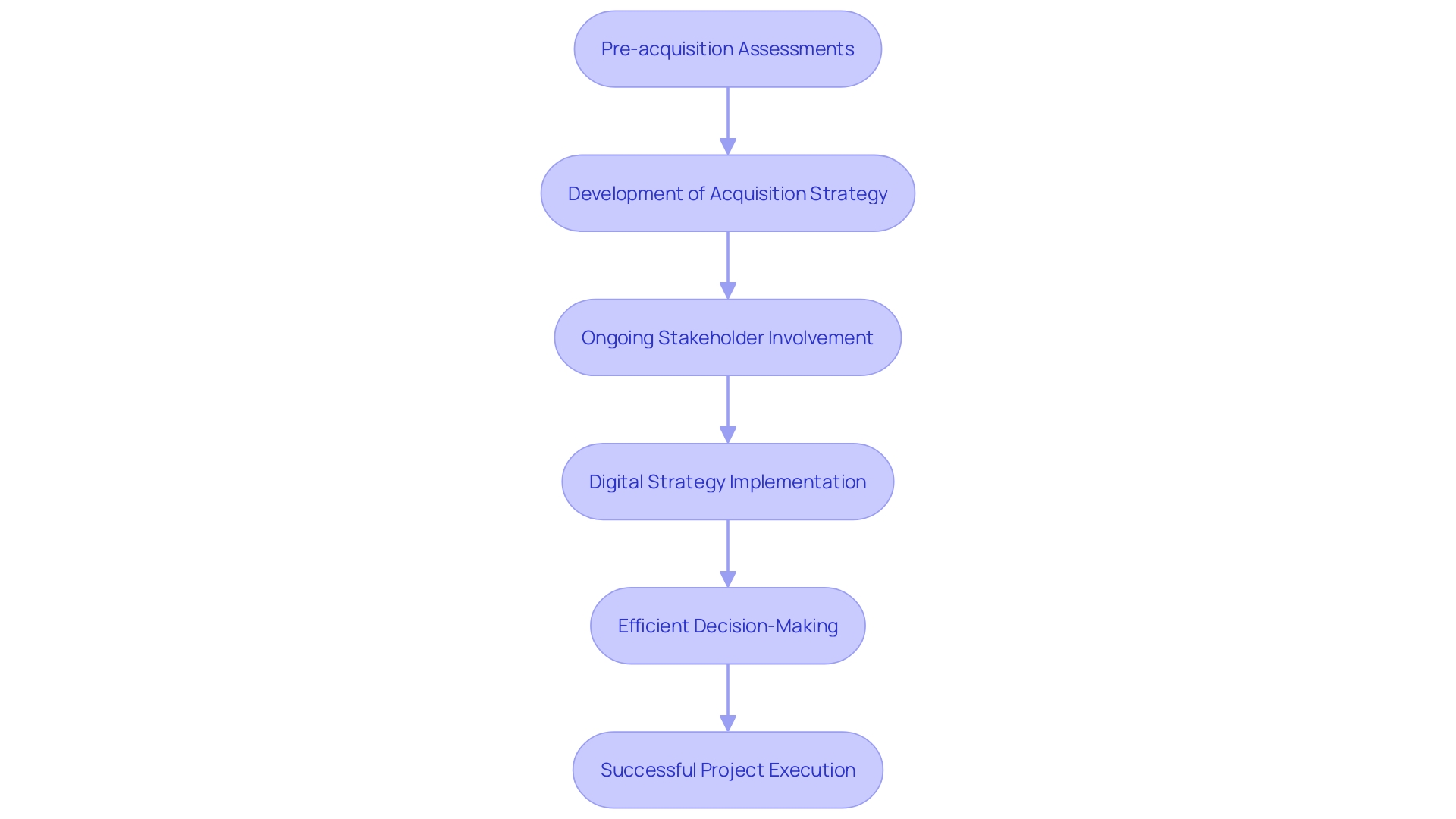
Case Studies and Lessons Learned in Wind Farm Land Acquisition
Examining successful wind farm land acquisitions offers invaluable insights and lessons. For instance, the EasyPermits platform stands out as a prime example of how technology can streamline the permitting process. This cloud-based, open-source tool is designed to enhance efficiency, transparency, and public involvement while being budget-friendly. Jakob Hasselgreen, a Permitting Agent in Denmark, has demonstrated how EasyPermits simplifies workflow, allowing for more effective community involvement.
Additionally, the strategic location of wind farms, such as the choice of Lompoc due to its favorable topography, underscores the importance of site selection in project success. The Energy Communities IWG's initiatives, including the Getting Started Guide and the Pennsylvania Rapid Response Team, further demonstrate the assistance available for navigating economic and resource transitions.
Moreover, understanding and addressing community concerns is crucial. Research indicates that opposition to renewable resources facilities often stems from legitimate issues related to design and location. Effective stakeholder engagement and conflict resolution are essential to mitigate these concerns and prevent delays in energy projects.
Overall, these case studies highlight the significance of strategic planning, technological innovation, and robust community engagement in successful land acquisitions for wind farms.
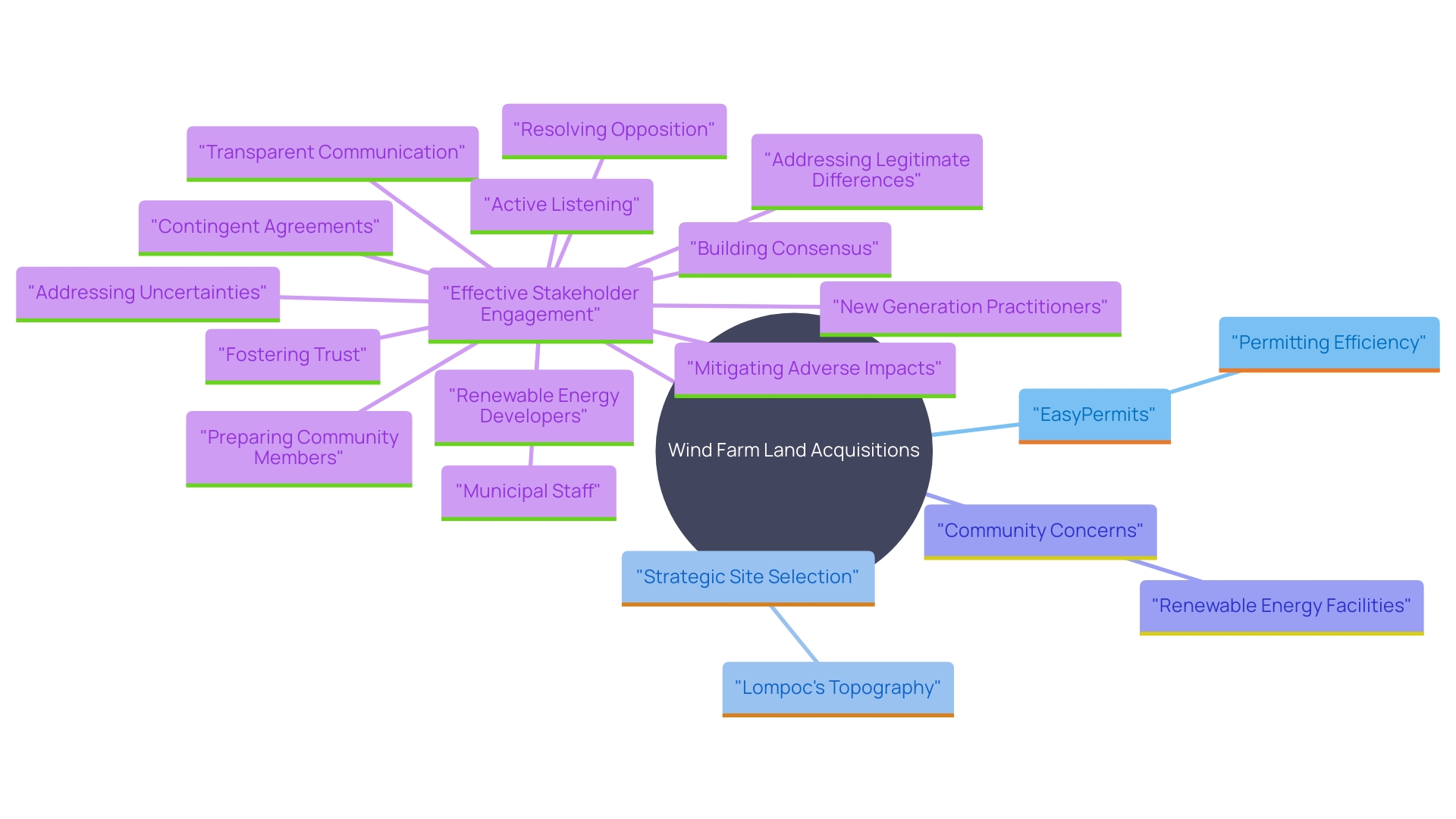
Conclusion
The challenges associated with land acquisition for renewable energy projects, particularly wind farms, cannot be overstated. Local zoning laws and community opposition have increasingly hindered development efforts, leading to significant delays and cancellations. The surge in restrictive local policies, exemplified by the 228 enacted in 2023 alone, emphasizes the necessity for developers to engage with local communities proactively.
Understanding the nuances of land tenure systems and navigating the complex permitting process are also critical to overcoming these hurdles.
Evaluating land for wind farm development requires a comprehensive understanding of multiple factors, including wind resource availability, proximity to transmission infrastructure, and environmental impacts. These considerations, coupled with socio-economic implications for local communities, form the foundation for informed decision-making. Furthermore, advancements in technology, such as Geographic Information Systems (GIS) and AI tools, have revolutionized site selection and title research, streamlining the land acquisition process.
Building trust with local communities is paramount. Engaging stakeholders early and fostering transparent communication can significantly enhance project acceptance. The importance of collaborative approaches, as demonstrated in successful case studies, highlights the effectiveness of genuine community involvement in mitigating opposition.
Best practices that emphasize continuous stakeholder engagement, clear acquisition strategies, and robust digital strategies are essential for navigating the complexities of land acquisition.
Ultimately, the successful planning and execution of wind energy projects hinge on addressing community concerns, adhering to regulatory frameworks, and leveraging technological advancements. By adopting a holistic and inclusive approach, developers can not only streamline the land acquisition process but also contribute to the sustainable development of renewable energy infrastructure.




